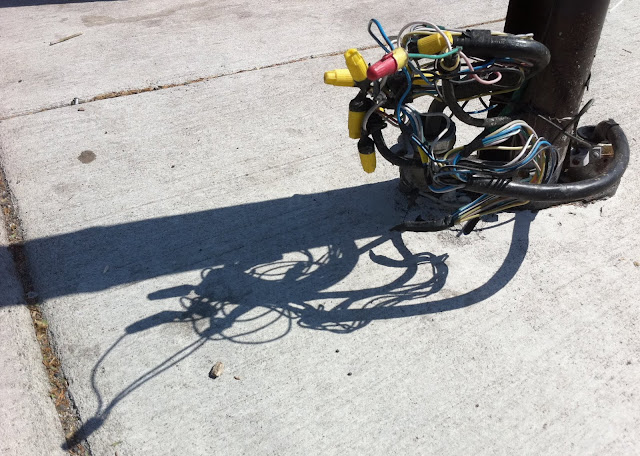 | ||||||||||||||
| Sanford Kwinter's Requiem for the City at the End of the Millennium (Actar, 2010). For a fuller look at of the collection of essays, see Dan Hill's post at City of Sound. |
Sanford Kwinter provides a long, winding, but useful definition of what infrastructure is, in his chapter "Urbanism, an Archivist's Art?", on page 59 of the above-mentioned text:
By "infrastructure" one means every aspect of the technology of rational administration that routinizes life, action, and property within larger (ultimately global) organizations. Today it can be argued that infrastructures own a little part of everything. Infrastructure includes the systemic expression of capital, of deregulated currency, interest rates, credit instruments, trade treaties, market forces, and the institutions that enforce them; it includes water, fuel, and electrical reservoirs, routes, and rates of supply; it encompasses demographic mutations and migrations, satellite networks and lotteries, logistics and supply coefficients, traffic computers, airports and distribution hubs, cadastral techniques, juridical routines, telephone systems, business district self-regulation mechanisms, evacuation and disaster mobilization protocols, prisons, and subways and freeways with their articulated connections; it includes libraries and weather-monitoring apparatuses, trash removal and recycling networks, sports stadiums and the managerial and delivery facilities for the data they generate, parking garages, gas pipelines and meters, hotels, public toilets, postal and park utilities and management, school systems and ATM machines; it covers celebrity, advertising and identity engineering, rail nodes and networks, television programming, interstate systems, entry ports and the public goods and agencies associated with them (Immigration and Naturalization Service, National Security Agency, Internal Revenue Service, Food and Drug Administration, Bureau of Alcohol Tobacco and Firearms); it comprises sewers and alarms, the multitiered military-entertainment apparatus, decision engineering pools, wetlands and water basins, civil structure maintenance schedules, epidemiological algorithms, cable delivery systems, police enforcement matrixes, licensing bylaws, greenmarkets, medical-pharmaceutical complexes, internet scaffolds, handgun regulations, granaries and water towers, military deployment procedures, and street and highway illumination schemas; in short, infrastructure concerns regimens of technical calculation of any and all kinds.Kwinter's point is useful, that infrastructure is embodied in everything we use - that infrastructural systems touch all aspects of life today, from the scale of the individual to the globe.



